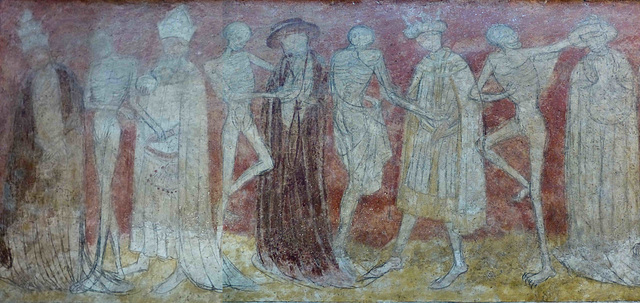La Chaise-Dieu
La Chaise-Dieu
La Chaise-Dieu
La Chaise-Dieu
La Chaise-Dieu
La Chaise-Dieu
La Chaise-Dieu
La Chaise-Dieu
La Chaise-Dieu
La Chaise-Dieu
La Chaise-Dieu
La Chaise-Dieu
La Chaise-Dieu
La Chaise-Dieu
La Chaise-Dieu
La Chaise-Dieu
La Chaise-Dieu
La Chaise-Dieu
La Chaise-Dieu
La Chaise-Dieu
Le Monastier-sur-Gazeille - Gaël Horellou Identité
Le Monastier-sur-Gazeille - Galaad Moutoz Swing Or…
Le Monastier-sur-Gazeille - Galaad Moutoz Swing Or…
La Chaise-Dieu
La Chaise-Dieu
La Chaise-Dieu
La Chaise-Dieu
La Chaise-Dieu
La Chaise-Dieu
La Chaise-Dieu
La Chaise-Dieu
La Chaise-Dieu
La Chaise-Dieu
Le Monastier-sur-Gazeille - Andy Emler MegaOctet
Le Monastier-sur-Gazeille - Andy Emler MegaOctet
Le Monastier-sur-Gazeille - Andy Emler MegaOctet
Le Monastier-sur-Gazeille - Daniel Zimmermann Quar…
Le Monastier-sur-Gazeille - Daniel Zimmermann Quar…
Le Monastier-sur-Gazeille - Combo du festival
Le Monastier-sur-Gazeille - Nahash Urban Brass Uni…
Lavaudieu - Abbaye Saint-André
Lavaudieu - Abbaye Saint-André
Lavaudieu - Abbaye Saint-André
Lavaudieu - Abbaye Saint-André
Lavaudieu - Abbaye Saint-André
Location
Lat, Lng:
You can copy the above to your favourite mapping app.
Address: unknown
You can copy the above to your favourite mapping app.
Address: unknown
See also...
Keywords
Authorizations, license
-
Visible by: Everyone -
All rights reserved
-
170 visits
La Chaise-Dieu


La Chaise-Dieu was founded in 1043 by Robert de Turlande. It was named "Casa Dei", from which La Chaise-Dieu developed. From the 11th to the 13th century, the abbey experienced rapid and significant development. When the founder died in 1067, already 300 monks lived here. In the Auvergne La Chaise-Dieu gained importance similar to that of the Burgundian Cluny Abbey. The abbey received many donations from noble families and administered 42 daughter monasteries. Popes who visited the abbey include Urban II, Calixt II, Alexander III. and Innocent II. In 1342, Pierre Roger, who had lived as a monk in La Chaise-Dieu, became Pope in Avignon under the name Clement VI. He financed a new building of the abbey church, in which he was finally buried. The building was completed in 1378 under the pontificate of Gregory XI, a nephew of Clement VI.
Since 1516 La Chaise-Dieu, like most other French abbeys, became "in commendam" so the commendatory abbot drew the revenue of the monastery but without fulfilling the duties of the abbot or even residing at the monastery.
Calvinist troops looted the abbey in August 1562. After most of the monastery buildings were destroyed by fire in 1695, they were rebuilt by the monks in the decades that followed. In 1786, Cardinal de Rohan, who was involved in the "Affair of the Diamond Necklace" was exiled to La Chaise-Dieu. While the abbey had 40 monks at that time, religious life ended at the beginning of the French Revolution.
La Chaise-Dieu is known for the "Danse Macabre" fresco. In three panels 23 living persons, representing the medieval society, are invited to "dance" the invitation to death with the skeletons around them. The artistic from of the "Dance of the Death" arose from the calamities of the 13th and 14th century. The plague, named "Black Death", forced so many people into this dance. Even the Pope, wearing a tiara, the Bishop, the Emporer and his spouse - all have to dance.
Since 1516 La Chaise-Dieu, like most other French abbeys, became "in commendam" so the commendatory abbot drew the revenue of the monastery but without fulfilling the duties of the abbot or even residing at the monastery.
Calvinist troops looted the abbey in August 1562. After most of the monastery buildings were destroyed by fire in 1695, they were rebuilt by the monks in the decades that followed. In 1786, Cardinal de Rohan, who was involved in the "Affair of the Diamond Necklace" was exiled to La Chaise-Dieu. While the abbey had 40 monks at that time, religious life ended at the beginning of the French Revolution.
La Chaise-Dieu is known for the "Danse Macabre" fresco. In three panels 23 living persons, representing the medieval society, are invited to "dance" the invitation to death with the skeletons around them. The artistic from of the "Dance of the Death" arose from the calamities of the 13th and 14th century. The plague, named "Black Death", forced so many people into this dance. Even the Pope, wearing a tiara, the Bishop, the Emporer and his spouse - all have to dance.
- Keyboard shortcuts:
Jump to top
RSS feed- Latest comments - Subscribe to the comment feeds of this photo
- ipernity © 2007-2025
- Help & Contact
|
Club news
|
About ipernity
|
History |
ipernity Club & Prices |
Guide of good conduct
Donate | Group guidelines | Privacy policy | Terms of use | Statutes | In memoria -
Facebook
Twitter

Sign-in to write a comment.